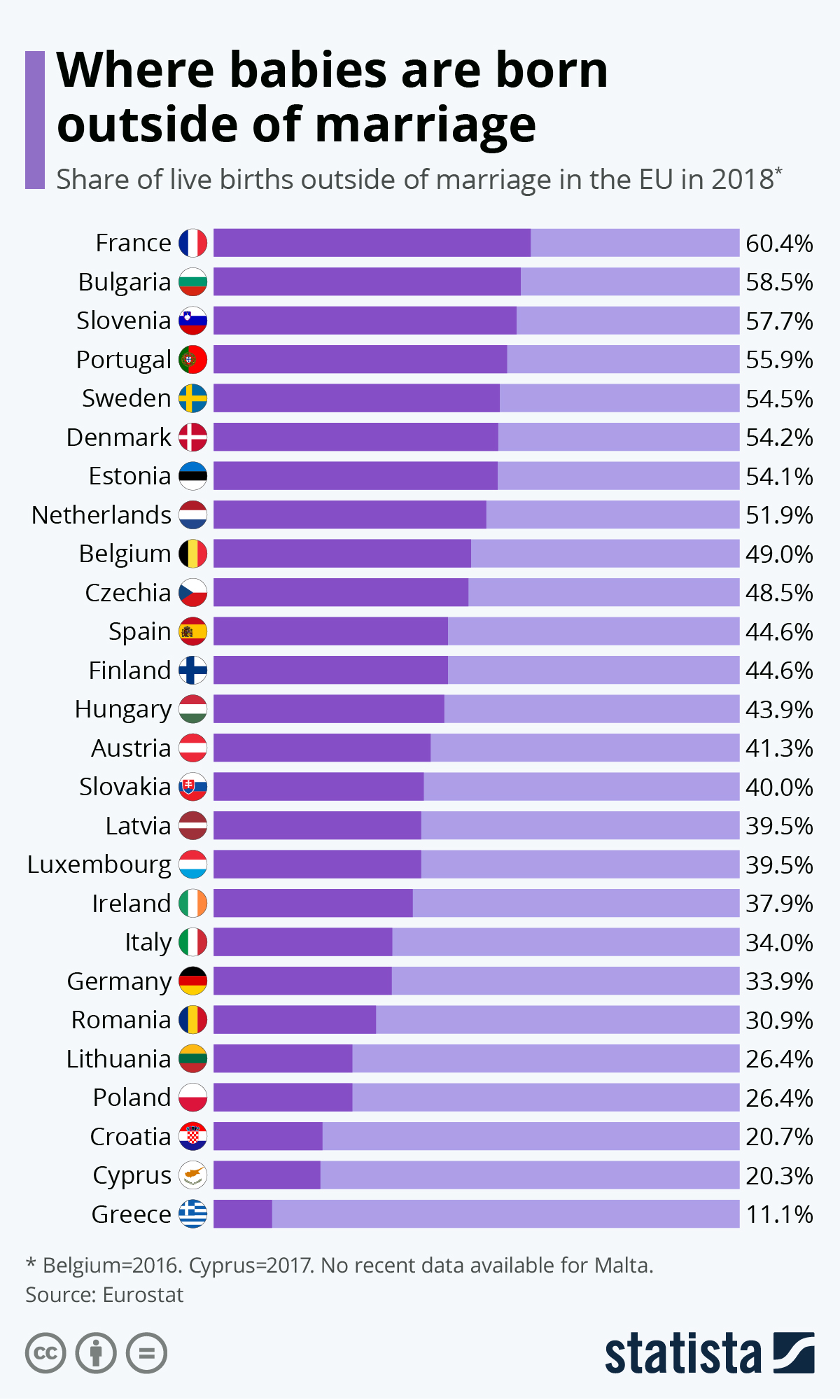Over a quarter of children in Poland are now born out of wedlock, continuing a steady rise from below 7% three decades ago, according to new official data for 2019 from Statistics Poland (GUS), a government agency.
Meanwhile, the number of marriages in Poland dropped by a fifth in 2020 – when wedding celebrations were restricted for much of the year due to the pandemic. But there was also a decline in divorces last year.
The report by Poland’s main statistical body found that people in Poland are marrying and having children later. According to GUS, delaying having a family has been a trend since the 1990s, as more young Poles prioritise getting a better education and becoming financially stable.
The median age for marriage is now roughly 30 years for men and 28 years for women, according to data from 2019, which is four years older for both sexes than in 2000. City-dwellers marry on average two years later than those living in the countryside.
Most Poles still tend to have children in the first three years of marriage. However, the proportion who give birth out of wedlock has been steadily increasing, from 6-7% in the early 1990s, to 12% in 2000, and reaching over 25% in 2019. The number is higher in cities (29%) than the countryside (21%).
Poland’s figure is, however, still low by European standards. According to Eurostat, France has the highest proportion of children born out of wedlock in the EU (over 60%), while only Croatia (21%), Cyprus (20%) and Greece (11%) are below Poland.
 You will find more infographics at Statista
You will find more infographics at Statista
The median age at which women give birth in Poland has also increased by between six and eight years since the early 1990s, and by two-four years since the early 2000s. Most women in Poland now have children between the ages of 26 and 31, with a median age of 30 years in 2019.
Last year, amid the pandemic, the number of weddings in Poland fell to just over 140,000, down from 180,000 in 2019. The figure had, however, already been in decline from a high of almost 260,000 in 2008. CBOS’s data show that in 2019, 60% of those tying the knot in Poland had a religious wedding.
Meanwhile, the number of divorces in 2020 also fell to 51,000, down by 14,000 on the previous year. As with weddings, the pandemic may have postponed some divorces due to the “temporarily limited activity of courts”, notes GUS.
In 2019, 57% of divorced couples had dependant children – a total of 55,000 between them. Courts granted shared parenting rights in 62% of cases, sole rights to the mother in around one third, and to the father in just 3% of cases.
The ruling national-conservative Law and Justice (PiS) party came to power in 2015 with promises to place great emphasis on family policy and “traditional” values.
Its flagship “500+” child-benefit programme, which gives generous monthly payments to parents for each of their offspring, has, however, failed to boost birth numbers, which have dropped to their lowest level in almost two decades.
In November, Poland’s family ministry launched the “Family First!” programme, which provides grants to projects promoting the benefits of starting a family earlier and having many children.
A year earlier, the government also introduced “Mama 4 plus”, a programme that guarantee a minimum state pension to mothers who have raised four or more children.
Main image credit: Milivojevic/Pixnio (under public domain)

Maria Wilczek is deputy editor of Notes from Poland. She is a regular writer for The Times, The Economist and Al Jazeera English, and has also featured in Foreign Policy, Politico Europe, The Spectator and Gazeta Wyborcza.



















